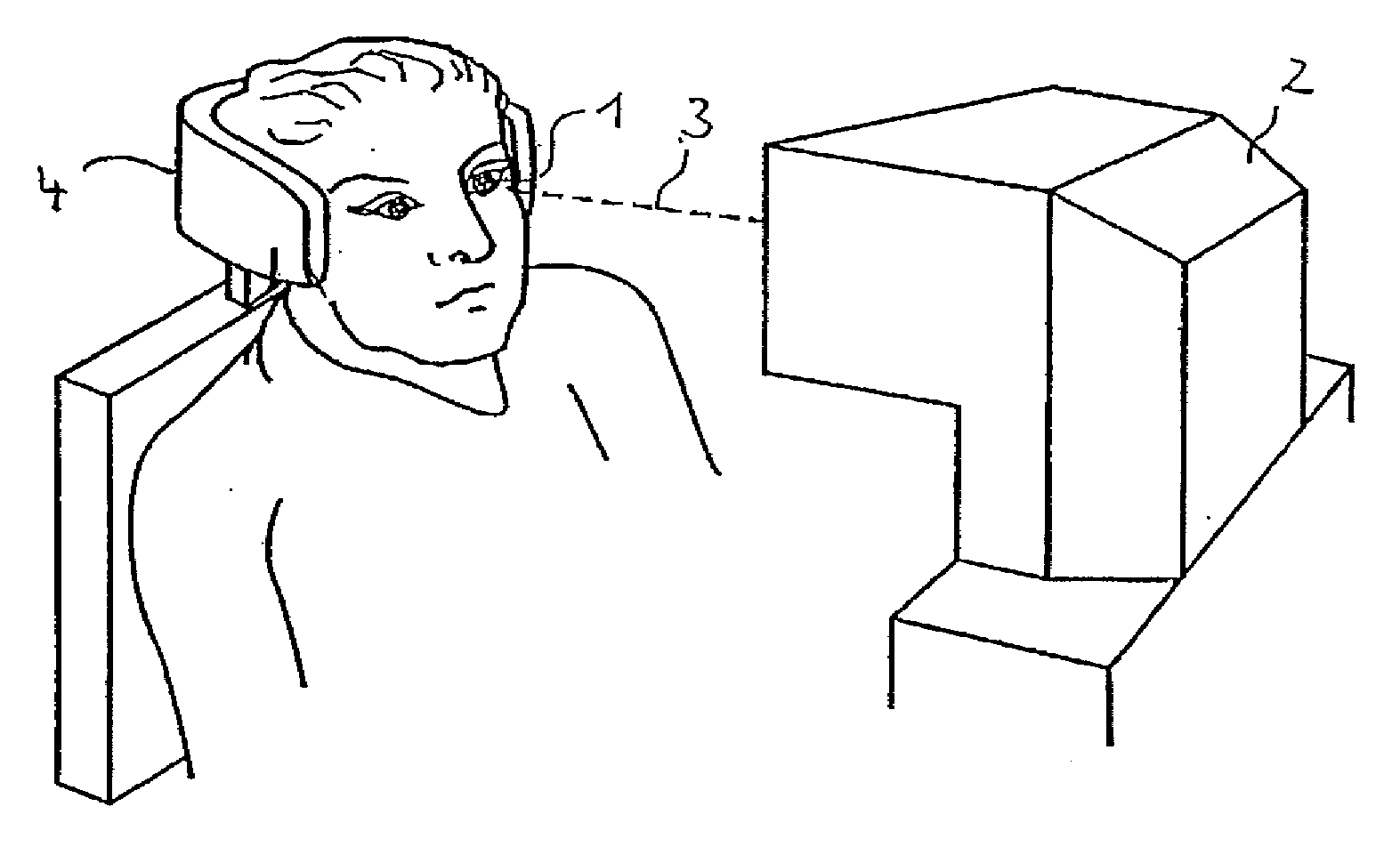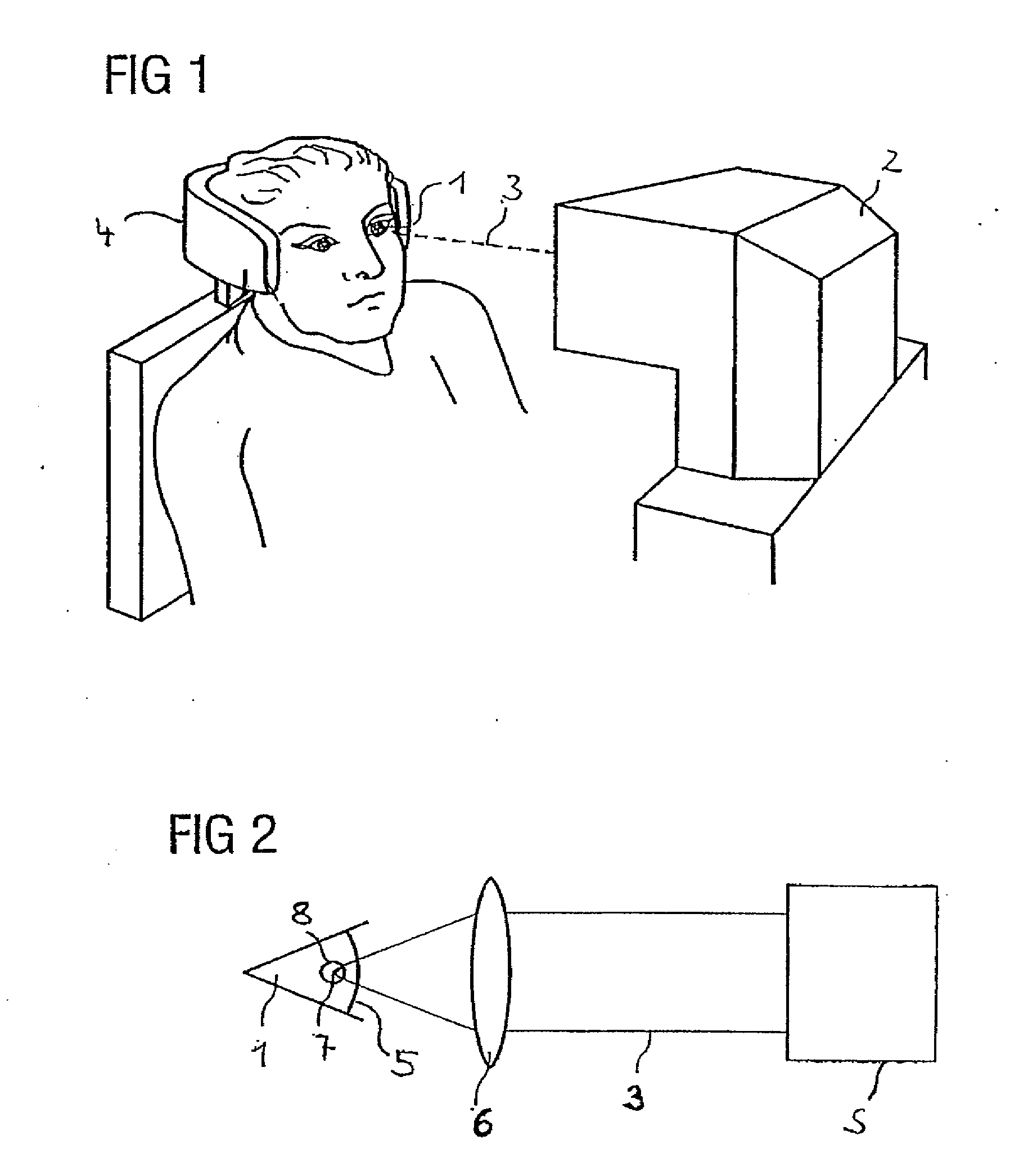Device and method for material processing by means of laser radiation
a laser radiation and material technology, applied in manufacturing tools, surgery, therapy, etc., can solve the problems of reducing affecting the quality of the cut, and the process takes a lot longer, and achieves the effect of reducing the distance between the center of interaction and high demands on the speed of deflection of the scanning uni
- Summary
- Abstract
- Description
- Claims
- Application Information
AI Technical Summary
Benefits of technology
Problems solved by technology
Method used
Image
Examples
Embodiment Construction
[0049]FIG. 1 shows a laser surgical instrument for treatment of a patient's eye 1, said laser surgical instrument 2 serving to effect a refractive correction. For this purpose, the instrument 2 emits a treatment laser beam 3 onto the eye of the patient 1 whose head is fixed in a head holder 4. The laser surgical instrument 2 is capable of generating a pulsed laser beam 3 such that the method described in U.S. Pat. No. 5,984,916 can be carried out. For example, the treatment laser beam 3 consists of fs-laser pulses having a pulse repetition rate of between 10 and 500 kHz. In the exemplary embodiment, the structural components of the instrument 2 are controlled by an integrated control unit.
[0050] As schematically shown in FIG. 2, the laser surgical instrument 2 comprises a source of radiation S whose radiation is focused into the cornea 5 of the eye 1. Using the laser surgical instrument 2 a visual deficiency of the patient's eye 1 is corrected by removing material from the cornea 5...
PUM
| Property | Measurement | Unit |
|---|---|---|
| spatial distance | aaaaa | aaaaa |
| spatial distance | aaaaa | aaaaa |
| spatial distance | aaaaa | aaaaa |
Abstract
Description
Claims
Application Information
 Login to View More
Login to View More - R&D
- Intellectual Property
- Life Sciences
- Materials
- Tech Scout
- Unparalleled Data Quality
- Higher Quality Content
- 60% Fewer Hallucinations
Browse by: Latest US Patents, China's latest patents, Technical Efficacy Thesaurus, Application Domain, Technology Topic, Popular Technical Reports.
© 2025 PatSnap. All rights reserved.Legal|Privacy policy|Modern Slavery Act Transparency Statement|Sitemap|About US| Contact US: help@patsnap.com



